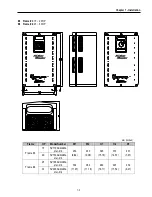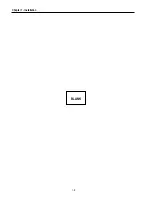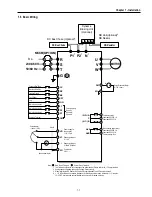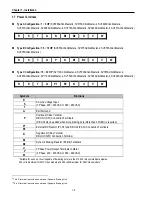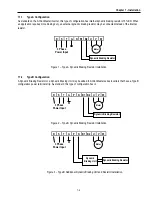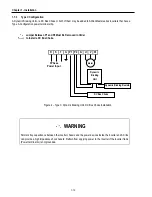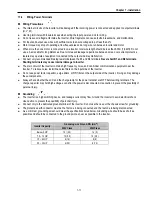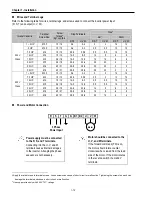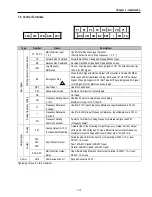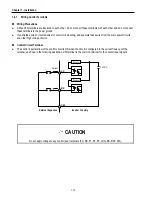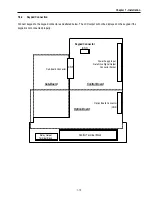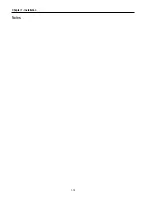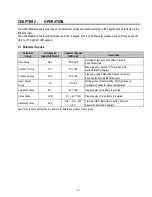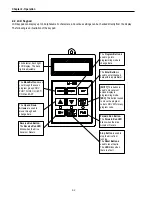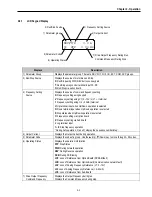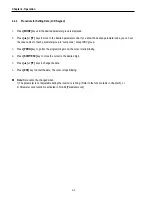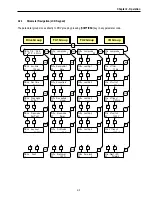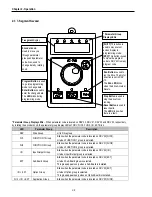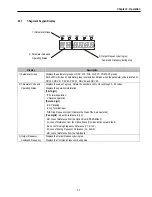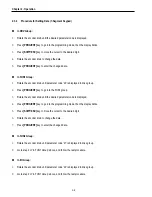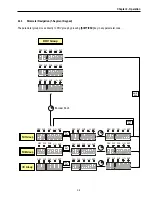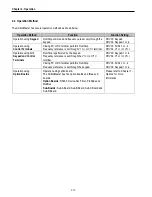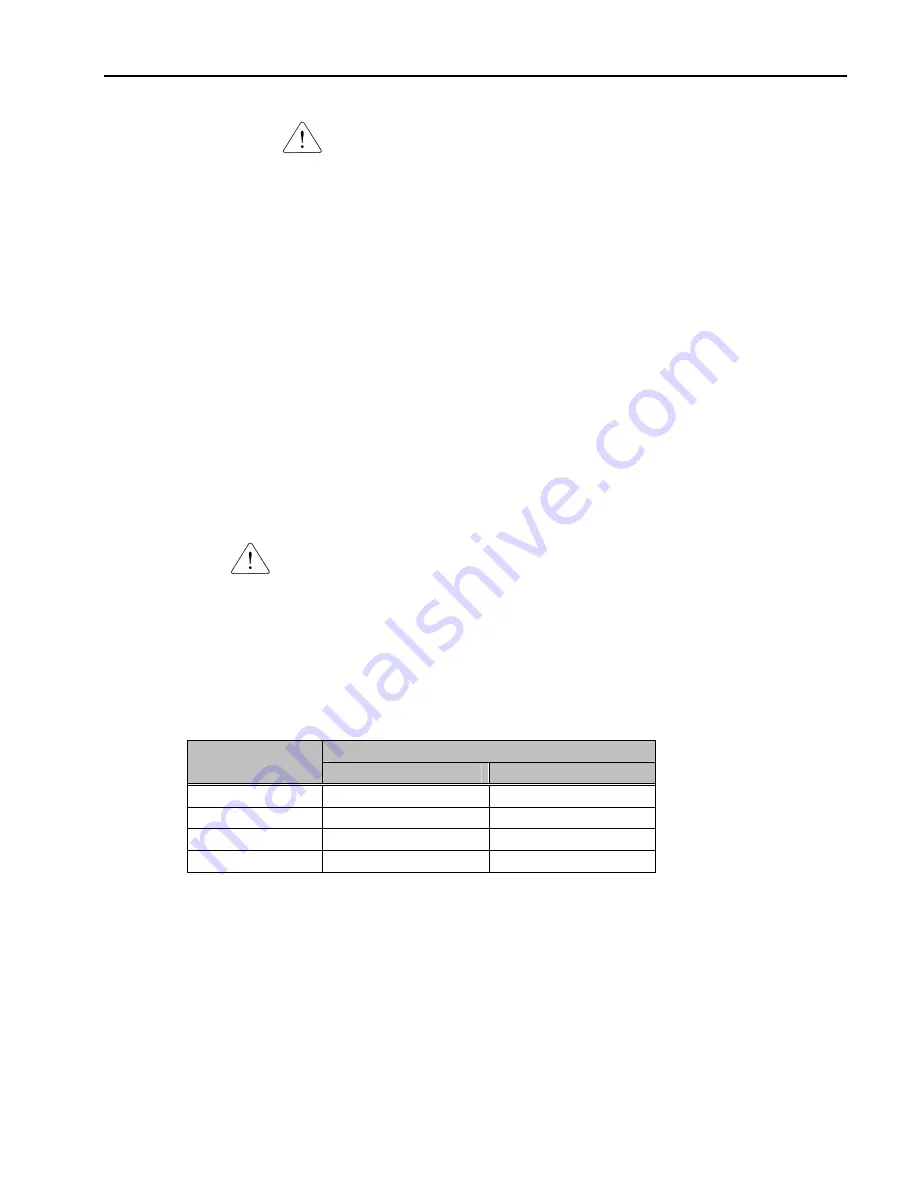
Chapter 1 - Installation
1-11
1.7.4
Wiring Power Terminals
Wiring Precautions
The internal circuits of the inverter will be damaged if the incoming power is connected and applied to output terminals
(U, V, W).
Use ring terminals with insulated caps when wiring the input power and motor wiring.
Do not leave wire fragments inside the inverter. Wire fragments can cause faults, breakdowns, and malfunctions.
For input and output, use wires with sufficient size to ensure voltage drop of less than 2%.
Motor torque may drop of operating at low frequencies and a long wire run between inverter and motor.
When more than one motor is connected to one inverter, total wire length should be less than 500m (1,640ft). Do not
use a 3-wire cable for long distances. Due to increased leakage capacitance between wires, over-current protective
feature may operate or equipment connected to the output side may malfunction.
Connect only recommended braking resistor between the B1 and B2 terminals.
Never short B1 and B2 terminals.
Shorting terminals may cause internal damage to inverter.
The main circuit of the inverter contains high frequency noise, and can hinder communication equipment near the
inverter. To reduce noise, install line noise filters on the input side of the inverter.
Do not use power factor capacitor, surge killers, or RFI filters on the output side of the inverter. Doing so may damage
these components.
Always check whether the LCD and the charge lamp for the power terminal are OFF before wiring terminals. The
charge capacitor may hold high-voltage even after the power is disconnected. Use caution to prevent the possibility of
personal injury.
Grounding
The inverter is a high switching device, and leakage current may flow. Ground the inverter to avoid electrical shock.
Use caution to prevent the possibility of personal injury.
Connect only to the dedicated ground terminal of the inverter. Do not use the case or the chassis screw for grounding.
The protective earth conductor must be the first one in being connected and the last one in being disconnected.
As a minimum, grounding wire should meet the specifications listed below. Grounding wire should be as short as
possible and should be connected to the ground point as near as possible to the inverter.
Grounding wire Sizes, AWG (mm
²
²²
²
)
Inverter Capacity
200V Class
400VClass
Below 5 HP
12 ((3.5)
14 (2)
7.5 ~ 10 HP
10 (5.5)
12 (3.5)
15 ~ 20 HP
6 (14)
8 (8)
25 ~ 30 HP
4 (22)
6 (14)
Summary of Contents for 30 HP30
Page 6: ......
Page 12: ......
Page 16: ...Chapter 1 Installation 1 4 BLANK ...
Page 18: ...Chapter 1 Installation 1 6 BLANK ...
Page 28: ...Chapter 1 Installation 1 16 Notes ...
Page 39: ...Chapter 2 Operation 2 11 Notes ...
Page 40: ......
Page 46: ......
Page 60: ...Chapter 4 Operation Examples 4 14 Notes ...
Page 83: ...Chapter 5 Parameter List 5 23 Notes ...
Page 84: ......
Page 92: ...Chapter 6 Parameter Description DRV 6 8 Notes ...
Page 105: ......
Page 106: ...Chapter 6 Parameter description FU1 6 14 Notes ...
Page 126: ...Chapter 6 Parameter Description FU2 6 34 Notes ...
Page 144: ...Chapter 6 Parameter Description I O 6 52 Notes ...
Page 162: ......
Page 188: ...Chapter 7 Options 7 26 Type 1 Max 400 Watt Type 2 Max 600 Watt A ...
Page 189: ...Chapter 7 Options 7 27 Type 3 ...
Page 194: ......
Page 204: ......
Page 210: ......









